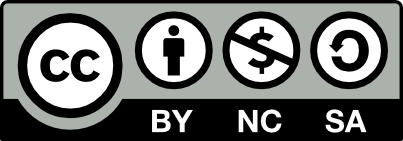Play2 默认支持的模板类型是 html, txt, xml 和 js,不在这些支持之列的模板文件即使放到 app/views 目录中,也不会被编译的。如果要支持自定义的模板类型就要些定制了,这比 Play1 复杂些。模板的定制包括在 Build.scala 或 build.sbt 中加上 templatesTypes 配置,并需创建 BufferedContent 和 Format 实现类。下面以增加 json 模板类型为例,兼顾 Scala 和 Java 的实现类,是基于 Play2.2 的,在 Play2.3 中又略有不同。
官方有相关的文档,参考:Custom formats on Scala, Custom formats on Java 和 模板定义参考.
在较新一些的 2.2 的 PlaySettings 中,可以看到
|
1 2 3 4 5 6 |
templatesTypes := Map( "html" -> "play.api.templates.HtmlFormat", "txt" -> "play.api.templates.TxtFormat", "xml" -> "play.api.templates.XmlFormat", "js" -> "play.api.templates.JavaScriptFormat" ) |
弄清了上面的原理后,开始我们的步骤
第一步:修改项目构建文件
在构建文件 build.sbt 或 Build.scala 中增加下面的内容作为项目的 setting
|
1 2 3 |
templatesTypes += ("json" -> "utilities.templates.JsonFormat") //这是针对 Scala 写的 JsonFormat //templatesTypes += ("json" -> "utilities.templates.JsonFormat.instance") // Java 的 JsonFormat 还要加上 instance 静态属性,下有具体例子https://yanbin.blog/wp-admin/post.php?post=6533&action=edit# |
Build.scala 中要加到下面的位置上
|
1 2 3 4 |
val main = play.Project(......) .settings( templatesTypes += ("json" -> "utilities.templates.JsonFormat.instance"), ) |
第二步:实现 Json 和 JsonFormat 类
和相应的实现类,前面说过需要两个类型
class Json extends BufferedContent 和 class JsonFormat implements Format, 实现各自接口中要求的方法和指定 Content-Type 为 application/json, Format 的 escape() 方法是 view 模板中默认被调用的,比如需要字符串的双引号转议等。
开始例子,可以选择下面的某一种实现方:
1. Scala 实现自定义 JSON template
Scala 的 Json 和 JsonFormat 类/对象 可以写在同一个文件中,比如说 JsonTemplate.scala 文件,内容如下:
|
1 2 3 4 5 6 7 8 9 10 11 12 13 14 15 16 17 18 19 20 21 22 23 24 25 26 27 |
package utilities import org.apache.commons.lang.StringEscapeUtils import play.api.http.MimeTypes import play.api.templates.BufferedContent import play.templates.Format class Json(buffer: StringBuilder) extends BufferedContent[Json](buffer) { val contentType = MimeTypes.JSON } object Json { def apply(text: String): Json = { new Json(new StringBuilder(text)) } def empty: Json = new Json(new StringBuilder) } object JsonFormat extends Format[Json] { def raw(text: String): Json = Json(text) def escape(text: String): Json = Json(StringEscapeUtils.escapeJava(text)) } |
2. Java 实现自定义 JSON template
Java 的实现则需要把 Json 和 JsonFormat 分到两个文件中去,因为它们必须都是 public 的,分别是
Json.java
|
1 2 3 4 5 6 7 8 9 10 11 12 13 14 |
package utilities; import play.api.templates.BufferedContent; public class Json extends BufferedContent<Json> { public Json(scala.collection.mutable.StringBuilder buffer) { super(buffer); } public String contentType() { return "application/json"; } } |
JsonFormat.java
|
1 2 3 4 5 6 7 8 9 10 11 12 13 14 15 16 17 18 19 |
package utilities; import org.apache.commons.lang.StringEscapeUtils; import play.templates.Format; import scala.collection.mutable.StringBuilder; public class JsonFormat implements Format<Json> { public Json raw(String text) { return new Json(new StringBuilder(text)); } public Json escape(String text) { return new Json(new StringBuilder(StringEscapeUtils.escapeJava(text))); } public static final JsonFormat instance = new JsonFormat(); //对于 Java 版本需要这个静态实例 } |
至此,自定义部分已经完成,开始应用 Json 模板了。
1. 书写 json 模板文件
模板文件必须以 .scala.json 结尾,比如创建文件 views/user/userlist.scala.json
|
1 2 3 4 |
@(user: User) { "Username": "@user.name", } |
假设在 models 包中已创建了 User(name: String) 类,如果 User 不在 models 包中就得写全路径,如 @(user: models.some.User),也可以在构建文件中用 templatesImport 加上默认引入包。
这时候一切正常的话,Play2 将为你生成源文件 target/scala-2.10/src_managed/main/views/json/user/userlist.template.scala 文件
2. 应用模板,在 controller 中渲染模板
|
1 |
return ok((Json)views.json.user.userlist.render(user)); |
如果你的 controller 是返回的
|
1 2 3 4 5 6 7 8 9 |
public static F.Promise<Result> index() { F.Promise<User> usersPromise = UserService.fetchAll(); return usersPromise.map(new F.Function<User, Result>() { @Override public Result apply(User user) throws Throwable { return ok((Json)views.json.user.userlist.render(user)); } }); } |
即使没有现成 F.Promise<User>,我们也可以 F.Promise.<String>pure("") 一个出来再 map。
这样可以想见模板中将要显示的内容。
附加内容, 可另立主题:view template 中调用外部 Java/Scala 方法
view template 的默认行为会把 null 显示为空字符串,这不是我们想要的,所以可以在模板中调用 Java/Scala 方法使用 Jackson 的手段来显示对象或对象属性
做法如下
1. JsonFormat 中稍作改动
把 escape 方法改成如下,此处不进行字符串转义,把任务交给后端代码去做
|
1 2 3 |
public Json escape(String text) { return new Json(text); } |
2. 创建 views/json/Helper 文件
|
1 2 3 4 5 6 7 8 9 10 11 12 13 |
package views.json; import com.fasterxml.jackson.core.JsonProcessingException; import com.fasterxml.jackson.databind.ObjectMapper; public class Helper { private static ObjectMapper jsonSerializer = new ObjectMapper(); public static String jsonValue(Object data) throws JsonProcessingException { return jsonSerializer.writeValueAsString(data); } } |
3. 修改项目构建文件
|
1 2 |
//模板默认引入了 models 下的类,下面同时引入了 models.some 包下的类,可以在编译出的模板源文件中看到相应引入 templatesImport ++= Seq("views.json.Helper._", "models.some._") //默认再引入 views.json.Helper._ 到模板文件中,书写更方 |
4. 模板文件
|
1 2 3 4 5 |
@(user: User) { "User": @jsonValue(user), "Username": @jsonValue(user.name) } |
上面完全是调用 Jackson 来输出 json 格式,所以字符串的双引号也省了,最终输出是
|
1 2 3 4 |
{ "User": {"name": "Unmi"}, "Username": "Unmi" } |
引入了 @jsonValue() 方法后,JSON 输出格式变得不可控制了,我们可以在 controller 中把 view 模板的输出重新美化成规整的 JSON 字符串。此是后话,非必要,随便便弄个浏览器就可以格式的很漂亮。
参考:
- https://searchcode.com/?q=play.api.templates.TxtFormat
- https://groups.google.com/forum/#!topic/play-framework/JKic1yVzgY0
- https://github.com/playframework/playframework/blob/2.2.x/framework/src/play/src/main/scala/play/api/templates/Templates.scala
- https://searchcode.com/codesearch/view/64071723/#l-217
- https://searchcode.com/codesearch/view/2451189/#l-210
- https://searchcode.com/codesearch/view/2451189/
本文链接 https://yanbin.blog/play2-custom-template-type-java-scala/, 来自 隔叶黄莺 Yanbin Blog
[版权声明]  本文采用 署名-非商业性使用-相同方式共享 4.0 国际 (CC BY-NC-SA 4.0) 进行许可。
本文采用 署名-非商业性使用-相同方式共享 4.0 国际 (CC BY-NC-SA 4.0) 进行许可。